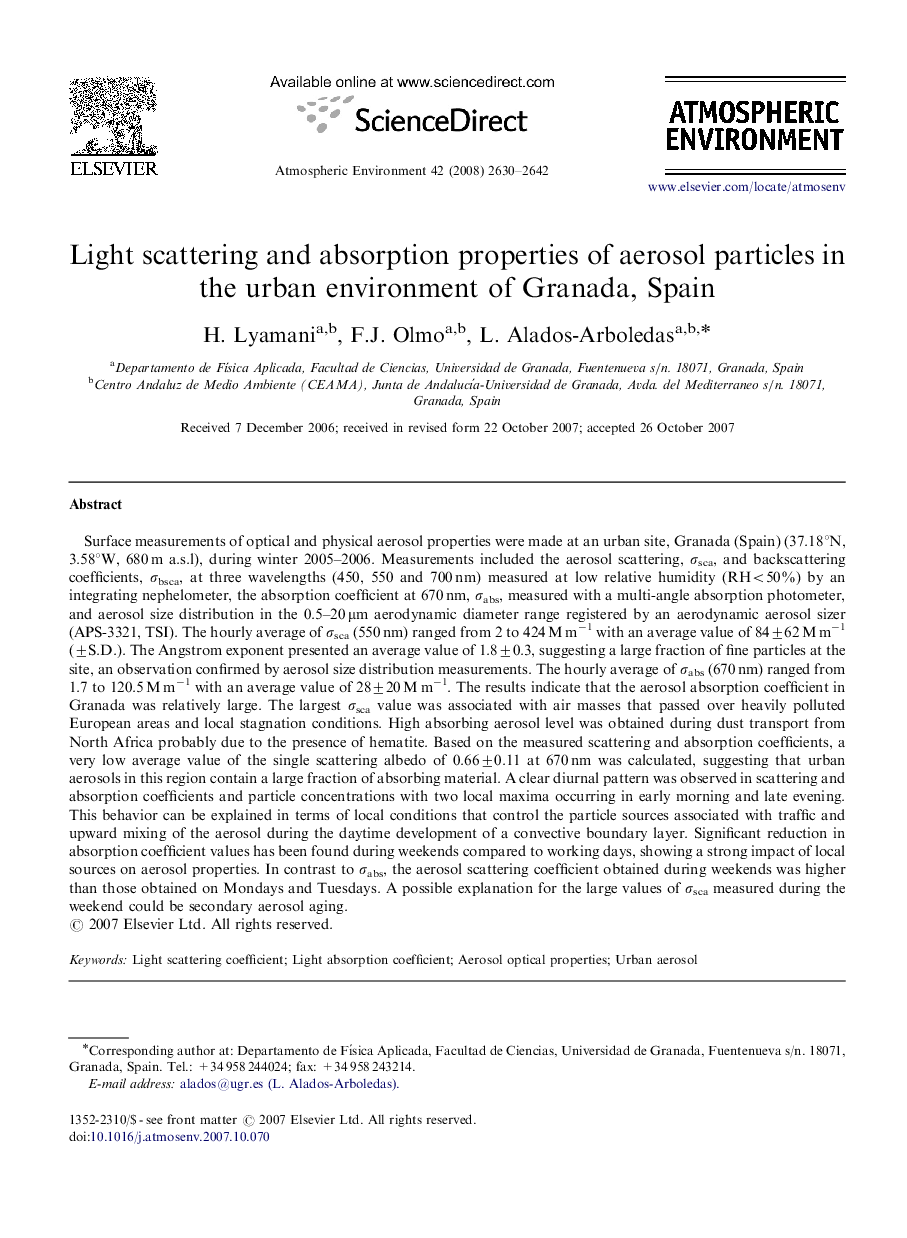| Article ID | Journal | Published Year | Pages | File Type |
|---|---|---|---|---|
| 4442833 | Atmospheric Environment | 2008 | 13 Pages |
Surface measurements of optical and physical aerosol properties were made at an urban site, Granada (Spain) (37.18°N, 3.58°W, 680 m a.s.l), during winter 2005–2006. Measurements included the aerosol scattering, σsca, and backscattering coefficients, σbsca, at three wavelengths (450, 550 and 700 nm) measured at low relative humidity (RH<50%) by an integrating nephelometer, the absorption coefficient at 670 nm, σabs, measured with a multi-angle absorption photometer, and aerosol size distribution in the 0.5–20 μm aerodynamic diameter range registered by an aerodynamic aerosol sizer (APS-3321, TSI). The hourly average of σsca (550 nm) ranged from 2 to 424 M m−1 with an average value of 84±62 M m−1 (±S.D.). The Angstrom exponent presented an average value of 1.8±0.3, suggesting a large fraction of fine particles at the site, an observation confirmed by aerosol size distribution measurements. The hourly average of σabs (670 nm) ranged from 1.7 to 120.5 M m−1 with an average value of 28±20 M m−1. The results indicate that the aerosol absorption coefficient in Granada was relatively large. The largest σsca value was associated with air masses that passed over heavily polluted European areas and local stagnation conditions. High absorbing aerosol level was obtained during dust transport from North Africa probably due to the presence of hematite. Based on the measured scattering and absorption coefficients, a very low average value of the single scattering albedo of 0.66±0.11 at 670 nm was calculated, suggesting that urban aerosols in this region contain a large fraction of absorbing material. A clear diurnal pattern was observed in scattering and absorption coefficients and particle concentrations with two local maxima occurring in early morning and late evening. This behavior can be explained in terms of local conditions that control the particle sources associated with traffic and upward mixing of the aerosol during the daytime development of a convective boundary layer. Significant reduction in absorption coefficient values has been found during weekends compared to working days, showing a strong impact of local sources on aerosol properties. In contrast to σabs, the aerosol scattering coefficient obtained during weekends was higher than those obtained on Mondays and Tuesdays. A possible explanation for the large values of σsca measured during the weekend could be secondary aerosol aging.
